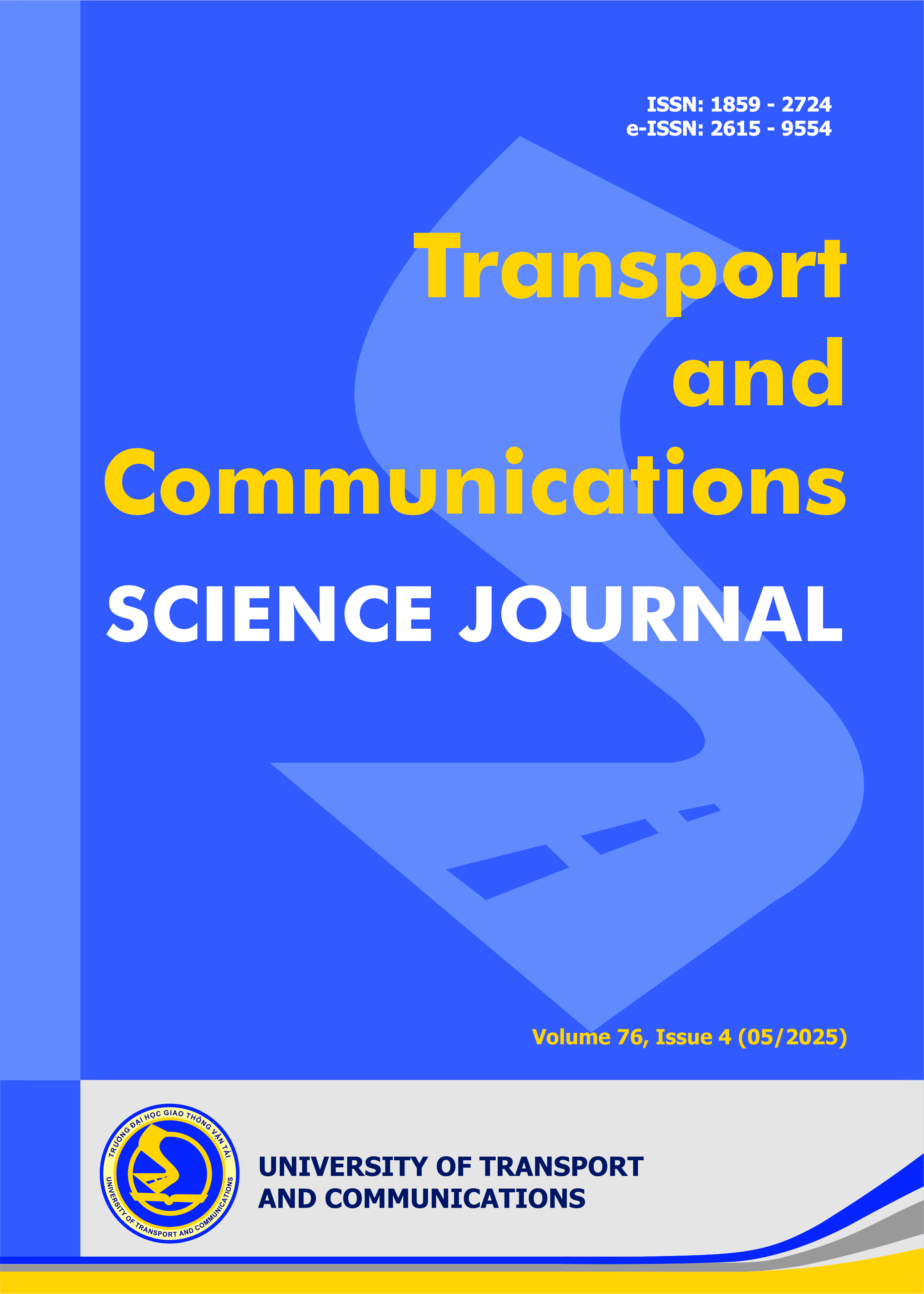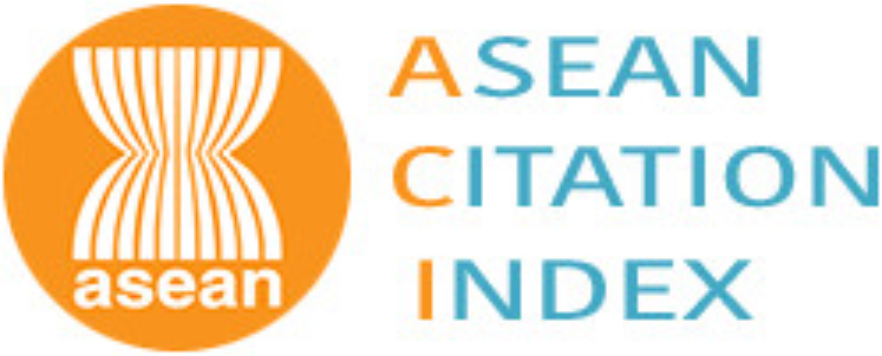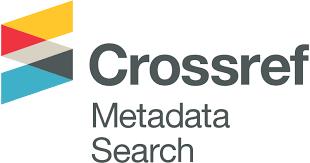Analyzing the effect of capital structure on sales growth: A case of listed transport enterprises in Vietnam
Email:
ptlananh@utc.edu.vn
Từ khóa:
capital structure, sales growth, transport enterprises, Vietnam
Tóm tắt
In the current context of Vietnam's economy gradually recovering and growing after the Covid-19 pandemic, the transportation industry plays a crucial role in the supply chain and circulation of goods. It is important for listed transport enterprises to carefully consider capital structure, as it not only affects financial capacity but also impacts sales growth. This study examines the correlation between capital structure and sales growth of listed transport enterprises in Vietnam from 2019 to 2022. The sample consists of 98 transport enterprises, and data was collected from their financial statements. The fuzzy-set Qualitative Comparative Analysis (fsQCA) method was utilized to determine the relationship between variables representing capital structure (such as total debt to equity ratio, short-term debt to total assets ratio, long-term debt to total assets ratio, and total debt to total assets ratio) and sales growth. The findings indicate that capital structure has a significant impact on sales growth. Additionally, the study reveals that the short-term and long-term debt ratios have both positive and negative effects on the sales growth of listed transport enterprises in Vietnam. These results provide valuable insights for managers in making informed decisions regarding the optimal capital structure for maximizing sales growth in the transportation industry in VietnamTài liệu tham khảo
[1]. F. Modigliani, M. H. Miller, The Cost of Capital, Corporation Finance and the Theory of Investment, The American Economic Review, 48 (1958) 261-297. http://www.jstor.org/stable/1809766
[2]. M. Salim, R. Yadav, Capital Structure and Firm Performance: Evidence from Malaysian Listed Companies, Procedia-Social and Behavioral Sciences, 65 (2012) 156-166. https://doi.org/10.1016/j.sbspro.2012.11.105
[3]. H. D. Luu, The Impact of Capital Structure on Firm Value: A Case Study in Vietnam, The Journal of Asian Finance, Economics and Business, 8 (2021) 287-292. https://doi.org/10.13106/jafeb.2021.vol8.no5.0287
[4]. T. L. Khang, N. T. Tuyen, P. T. A. Thu, Capital structure and operating efficiency of listed joint stock companies in Vietnam and the regulatory impact of state ownership, Review of Fianance, 2 (2021) (In Vietnamese). Retrieved from https://tapchitaichinh.vn/tac-dong-cua-cau-truc-von-den-loi-nhuan-cua-cac-cong-ty-niem-yet-tai-hose.html
[5]. R. Rajan, L. Zingales, What Do We Know about Capital Structure? Some Evidence from International Data, Journal of Finance, 50 (1995) 1421-1460. http://dx.doi.org/10.1111/j.1540-6261.1995.tb05184.x
[6] J. C. T. Gaytan, K. Ateeq, A. Rafiuddin, H. M. Alzoubi, T. M. Ghazal, T. A. Ahanger, S. Chaudhary, G. K. Viju, AI-Based Prediction of Capital Structure: Performance Comparison of ANN SVM and LR Models, Computational Intelligence and Neuroscience, (2022) 8334927. https://doi.org/10.1155/2022/8334927
[7]. J. B. Barney, Firm Resources and Sustained Competitive Advantage, Journal of Management, 17 (1991) 99-120. https://doi.org/10.1177/014920639101700108
[8]. E. Penrose, The Theory of the Growth of the Firm, Basil Blackwell, Oxford, 1959.
[9]. M. C. Jensen, W. H. Meckling, Theory of the Firm: Managerial Behavior, Agency Costs and Ownership Structure, Journal of Financial Economics, 3 (1976) 305-360.
[10]. E. Fama, M. Jensen, Separation of Ownership and Control, Journal of Law and Economics, 26 (1983) 301-325. http://dx.doi.org/10.1086/467037
[11]. A. Kraus, R. H. Litzenberger, A State-Reference Model of Optimal Financial Leverage, The Journal of Finance, 28 (1973) 911-922. https://doi.org/10.1111/j.1540-6261.1973.tb01415.x
[12]. S. C. Myers, The Capital Structure Puzzle. Journal of Finance, 39 (1984) 575-592. http://dx.doi.org/10.2307/2327916
[13]. Z. Ahmad, N. Mohd, H. Abdullah, S. Roslan, Capital Structure Effect on Firms Performance: Focusing on Consumers and Industrials Sectors on Malaysian Firms, International Review of Business Research Papers, 8 (2012) 137-155.
[14]. A. Demirgüç-Kunt, V. Maksimovic, Funding growth in bank-based and market-based financial systems: Evidence from firm-level data, Journal of Financial Economics, 54 (1999) 295-336. https://doi.org/10.1016/S0304-405X(99)00003-2
[15] S. Titman, R. Wessels, The Determinants of Capital Structure Choice, The Journal of Finance, 43 (1988) 1-19. http://dx.doi.org/10.1111/j.1540-6261.1988.tb02585.x
[16] M. Z. Frank, V. K. Goyal, Capital Structure Decisions: Which Factors Are Reliably Important? Financial Management, 38 (2009) 1-37. http://dx.doi.org/10.1111/j.1755-053X.2009.01026.x
[17]. C. C. Ragin, The Comparative Method. Moving Beyond Qualitative and Quantitative Strategies, Berkeley/Los Angeles/London: University of California Press, 1987.
[18]. I. G. A. P. T. Putri, H. Rahyuda, Effect of capital structure and sales growth on firm value with profitability as mediation, International Research Journal of Management, IT & Social Sciences, 7 (2020) 145-155. https://doi.org/10.21744/irjmis.v7n1.833
[19]. D. Nissim, S. H. Penman, Financial Statement Analysis of Leverage and How It Informs About Profitability and Price-to-Book Ratios, Review of Accounting Studies, 8 (2003) 531-560. https://doi.org/10.1023/A:1027324317663
[20]. J. F. Gomes, L. Schmid, Levered Returns, The Journal of Finance, 65 (2010) 467-494. http://www.jstor.org/stable/25656301
[21]. G. Kirch, P. R. S. Terra, Determinants of corporate debt maturity in South America: Do institutional quality and financial development matter? Journal of Corporate Finance, 18 (2012) 980-993. https://doi.org/10.1016/j.jcorpfin.2012.05.004
[22]. A. A. Onaolapo, S. O. Kajola, Capital Structure and Firm Performance: Evidence from Nigeria, European Journal of Economics, Finance and Administrative Sciences, 25 (2010) 70-82.
[23]. A. G. Woodside, Embrace perform model: Complexity theory, contrarian case analysis, and multiple realities, Journal of Business Research, 67 (2014) 2495-2503. https://doi.org/10.1016/j.jbusres.2014.07.006
[2]. M. Salim, R. Yadav, Capital Structure and Firm Performance: Evidence from Malaysian Listed Companies, Procedia-Social and Behavioral Sciences, 65 (2012) 156-166. https://doi.org/10.1016/j.sbspro.2012.11.105
[3]. H. D. Luu, The Impact of Capital Structure on Firm Value: A Case Study in Vietnam, The Journal of Asian Finance, Economics and Business, 8 (2021) 287-292. https://doi.org/10.13106/jafeb.2021.vol8.no5.0287
[4]. T. L. Khang, N. T. Tuyen, P. T. A. Thu, Capital structure and operating efficiency of listed joint stock companies in Vietnam and the regulatory impact of state ownership, Review of Fianance, 2 (2021) (In Vietnamese). Retrieved from https://tapchitaichinh.vn/tac-dong-cua-cau-truc-von-den-loi-nhuan-cua-cac-cong-ty-niem-yet-tai-hose.html
[5]. R. Rajan, L. Zingales, What Do We Know about Capital Structure? Some Evidence from International Data, Journal of Finance, 50 (1995) 1421-1460. http://dx.doi.org/10.1111/j.1540-6261.1995.tb05184.x
[6] J. C. T. Gaytan, K. Ateeq, A. Rafiuddin, H. M. Alzoubi, T. M. Ghazal, T. A. Ahanger, S. Chaudhary, G. K. Viju, AI-Based Prediction of Capital Structure: Performance Comparison of ANN SVM and LR Models, Computational Intelligence and Neuroscience, (2022) 8334927. https://doi.org/10.1155/2022/8334927
[7]. J. B. Barney, Firm Resources and Sustained Competitive Advantage, Journal of Management, 17 (1991) 99-120. https://doi.org/10.1177/014920639101700108
[8]. E. Penrose, The Theory of the Growth of the Firm, Basil Blackwell, Oxford, 1959.
[9]. M. C. Jensen, W. H. Meckling, Theory of the Firm: Managerial Behavior, Agency Costs and Ownership Structure, Journal of Financial Economics, 3 (1976) 305-360.
[10]. E. Fama, M. Jensen, Separation of Ownership and Control, Journal of Law and Economics, 26 (1983) 301-325. http://dx.doi.org/10.1086/467037
[11]. A. Kraus, R. H. Litzenberger, A State-Reference Model of Optimal Financial Leverage, The Journal of Finance, 28 (1973) 911-922. https://doi.org/10.1111/j.1540-6261.1973.tb01415.x
[12]. S. C. Myers, The Capital Structure Puzzle. Journal of Finance, 39 (1984) 575-592. http://dx.doi.org/10.2307/2327916
[13]. Z. Ahmad, N. Mohd, H. Abdullah, S. Roslan, Capital Structure Effect on Firms Performance: Focusing on Consumers and Industrials Sectors on Malaysian Firms, International Review of Business Research Papers, 8 (2012) 137-155.
[14]. A. Demirgüç-Kunt, V. Maksimovic, Funding growth in bank-based and market-based financial systems: Evidence from firm-level data, Journal of Financial Economics, 54 (1999) 295-336. https://doi.org/10.1016/S0304-405X(99)00003-2
[15] S. Titman, R. Wessels, The Determinants of Capital Structure Choice, The Journal of Finance, 43 (1988) 1-19. http://dx.doi.org/10.1111/j.1540-6261.1988.tb02585.x
[16] M. Z. Frank, V. K. Goyal, Capital Structure Decisions: Which Factors Are Reliably Important? Financial Management, 38 (2009) 1-37. http://dx.doi.org/10.1111/j.1755-053X.2009.01026.x
[17]. C. C. Ragin, The Comparative Method. Moving Beyond Qualitative and Quantitative Strategies, Berkeley/Los Angeles/London: University of California Press, 1987.
[18]. I. G. A. P. T. Putri, H. Rahyuda, Effect of capital structure and sales growth on firm value with profitability as mediation, International Research Journal of Management, IT & Social Sciences, 7 (2020) 145-155. https://doi.org/10.21744/irjmis.v7n1.833
[19]. D. Nissim, S. H. Penman, Financial Statement Analysis of Leverage and How It Informs About Profitability and Price-to-Book Ratios, Review of Accounting Studies, 8 (2003) 531-560. https://doi.org/10.1023/A:1027324317663
[20]. J. F. Gomes, L. Schmid, Levered Returns, The Journal of Finance, 65 (2010) 467-494. http://www.jstor.org/stable/25656301
[21]. G. Kirch, P. R. S. Terra, Determinants of corporate debt maturity in South America: Do institutional quality and financial development matter? Journal of Corporate Finance, 18 (2012) 980-993. https://doi.org/10.1016/j.jcorpfin.2012.05.004
[22]. A. A. Onaolapo, S. O. Kajola, Capital Structure and Firm Performance: Evidence from Nigeria, European Journal of Economics, Finance and Administrative Sciences, 25 (2010) 70-82.
[23]. A. G. Woodside, Embrace perform model: Complexity theory, contrarian case analysis, and multiple realities, Journal of Business Research, 67 (2014) 2495-2503. https://doi.org/10.1016/j.jbusres.2014.07.006
Tải xuống
Chưa có dữ liệu thống kê

Nhận bài
31/03/2025
Nhận bài sửa
24/04/2025
Chấp nhận đăng
10/05/2025
Xuất bản
15/05/2025
Chuyên mục
Công trình khoa học
Kiểu trích dẫn
Pham Thi Lan, A., & Do Thi Hai, Y. (1747242000). Analyzing the effect of capital structure on sales growth: A case of listed transport enterprises in Vietnam. Tạp Chí Khoa Học Giao Thông Vận Tải, 76(4), 519-529. https://doi.org/10.47869/tcsj.76.4.6
Số lần xem tóm tắt
62
Số lần xem bài báo
40









